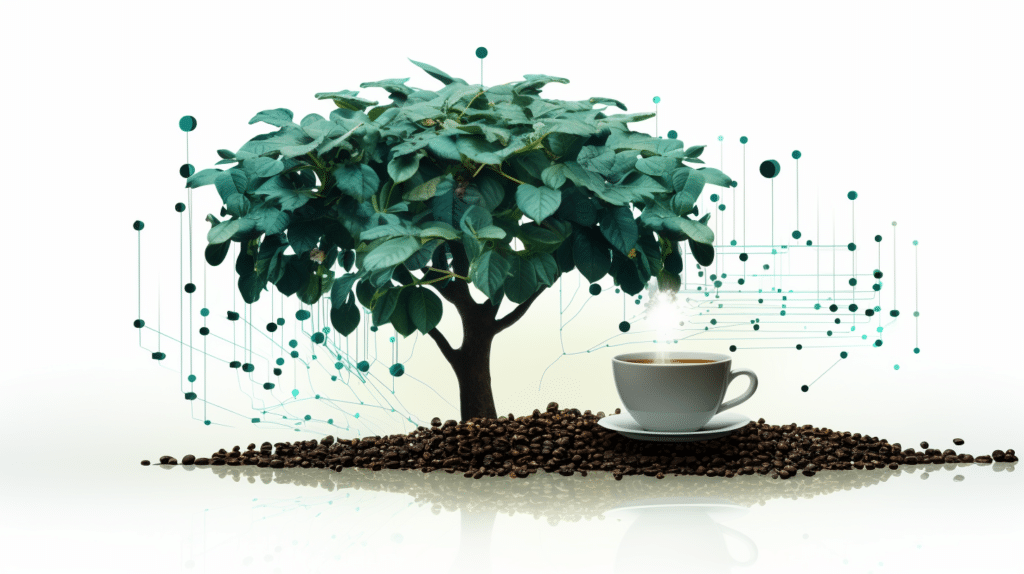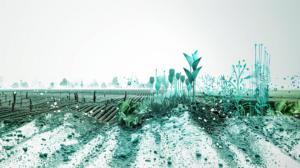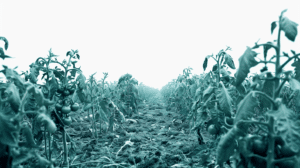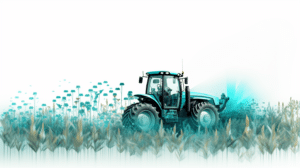Coffee and cacao, those cherished beans that fill our cups and plates, are not just commodities; they’re the lifeblood of over 140 million people worldwide, including 30 million smallholder farmers who depend on them for their livelihoods. These crops also serve as essential exports for many developing nations, contributing billions of dollars in revenue each year.
However, cultivating these beloved beans comes with its own set of challenges. Both coffee and cacao are incredibly sensitive to climate and agronomic complexities. Coffee and Cacao cultivation require a specific temperature, water, and soil conditions, making climate variability a significant concern.
In the past, these crops thrived in shaded environments within diverse ecosystems, often surrounded by banana and plantain plants. Yet, the so-called “green revolution” led to deforestation in pursuit of higher yields through full sun cultivation, a shift that has had far-reaching consequences, including soil degradation and biodiversity loss.
The Complexity of Coffee and Cacao Supply Chains
One of the fundamental challenges in coffee and cacao cultivation lies within their multi-phased supply chains. From the farm to your cup or chocolate bar, these beans go through a complex journey with multiple intermediaries. Here’s a glimpse into the coffee and cacao supply chain complexity:
Farming and Harvesting: Smallholder farmers are at the heart of coffee and cacao production. They tend to their crops, nurture them, and harvest the beans when they’re just right. However, ensuring the quality and sustainability of these crops is no easy task.
Processing and Fermentation: Once harvested, the beans need processing. This step varies depending on the type of bean, but it’s crucial to remove pulp, ferment, and dry them properly.
Export and Import: Exporters play a pivotal role in getting these beans from the countries of origin to consumer markets. Importers then bring them into the destination country, handling shipping, customs, and quality control.
Roasting and Manufacturing: Upon arrival, coffee beans often undergo roasting, a critical step in determining the flavor profile. In the case of cacao, they’re processed into cocoa mass, cocoa butter, and cocoa powder for various chocolate products.
Retail and Packaging: From roasters and chocolate manufacturers to cafes and retailers, the beans find their way to consumers. The final product may be a steaming cup of coffee or a delectable chocolate bar.
Consumer and Recycling: It all ends with the consumer, savoring that aromatic coffee or indulging in the finest chocolate. Ideally, the journey continues with responsible recycling or disposal.
The EU Deforestation Regulation Effect
The introduction of the European Union’s Deforestation Regulation (EUDR) promises a transformative impact on coffee and cacao supply chains. Set to take effect on December 31, 2024, the EUDR casts a discerning eye on the origins of production and the adherence to human rights and labor conditions. This means that coffee and cacao producers, will face heightened scrutiny, compelling them to adopt more responsible sourcing practices. The EUDR underscores the urgency of addressing issues such as exploitative labor practices and child labor, with the potential to reshape industry dynamics.
The Carbon Footprint Challenge
Carbon emissions pose another formidable challenge in the coffee and cacao sectors. The cultivation and processing of these commodities often involve energy-intensive practices and transportation across complex supply chains, contributing to their carbon footprint. As climate change continues to accelerate, addressing these emissions becomes paramount for sustainability. Sustainability organizations, government bodies and the international Paris agreement set targets and guidelines for reducing carbon emissions. Companies are now compelled to calculate and mitigate their carbon footprint, promoting more environmentally responsible practices. This holistic approach aims to not only safeguard the natural ecosystems but also mitigate the environmental impact of coffee and cacao production, aligning with broader global agendas for climate action and sustainability.
To thrive in this evolving landscape, stakeholders in coffee and cacao cultivation must work collaboratively to ensure compliance and ethical practices, thereby safeguarding the rights and well-being of growers and their communities while contributing to a more sustainable future.








